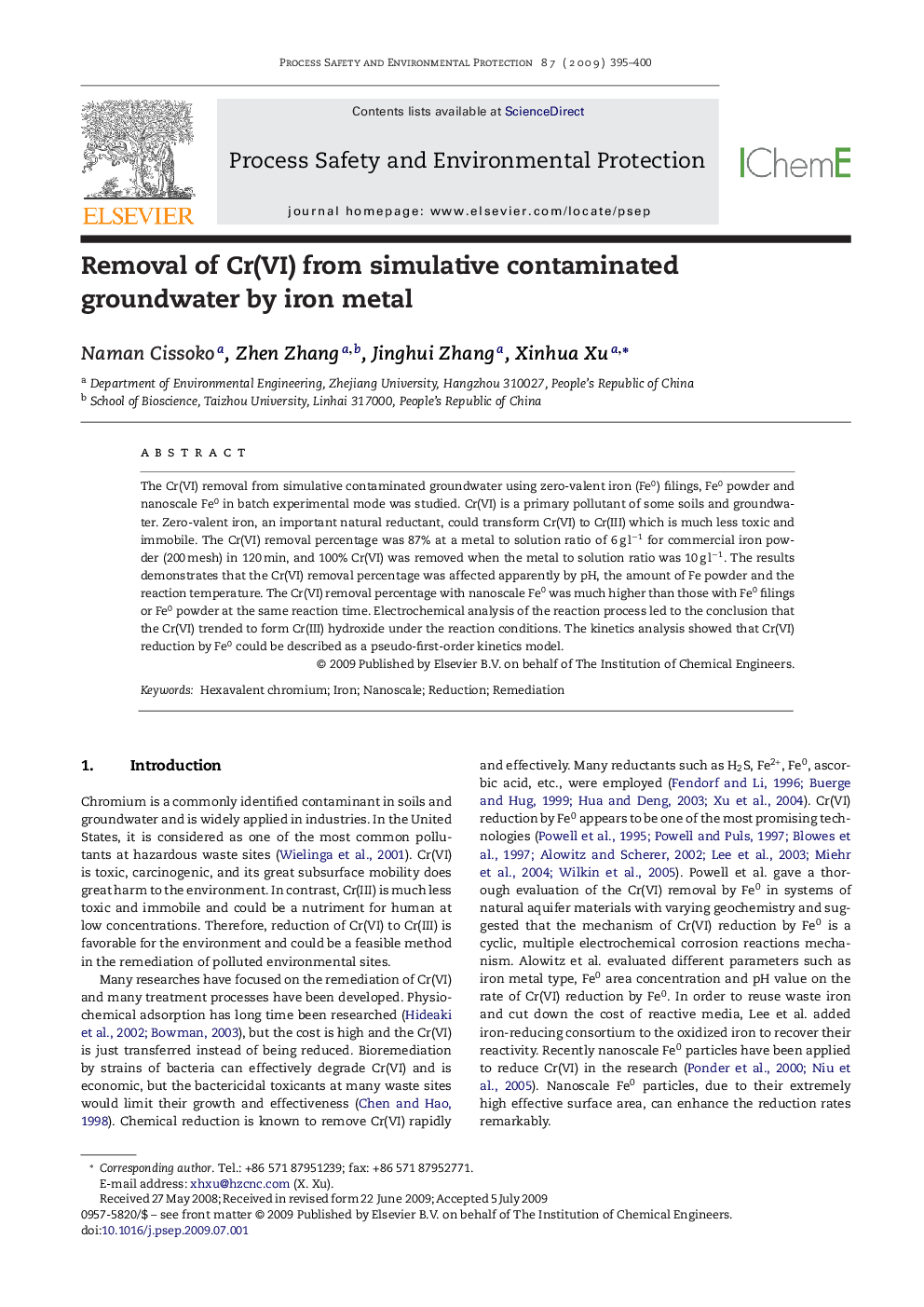| Article ID | Journal | Published Year | Pages | File Type |
|---|---|---|---|---|
| 588792 | Process Safety and Environmental Protection | 2009 | 6 Pages |
The Cr(VI) removal from simulative contaminated groundwater using zero-valent iron (Fe0) filings, Fe0 powder and nanoscale Fe0 in batch experimental mode was studied. Cr(VI) is a primary pollutant of some soils and groundwater. Zero-valent iron, an important natural reductant, could transform Cr(VI) to Cr(III) which is much less toxic and immobile. The Cr(VI) removal percentage was 87% at a metal to solution ratio of 6 g l−1 for commercial iron powder (200 mesh) in 120 min, and 100% Cr(VI) was removed when the metal to solution ratio was 10 g l−1. The results demonstrates that the Cr(VI) removal percentage was affected apparently by pH, the amount of Fe powder and the reaction temperature. The Cr(VI) removal percentage with nanoscale Fe0 was much higher than those with Fe0 filings or Fe0 powder at the same reaction time. Electrochemical analysis of the reaction process led to the conclusion that the Cr(VI) trended to form Cr(III) hydroxide under the reaction conditions. The kinetics analysis showed that Cr(VI) reduction by Fe0 could be described as a pseudo-first-order kinetics model.
